When it’s omnichannel vs. multichannel, customers seem to have a clear favorite with omnichannel marketing – but why?
According to Coveo’s 2024 Commerce Industry Report, ninety-four percent of modern shoppers start or end their journey in the digital space. And we don’t even mean actually making a purchase. Thirty-one percent use online methods to see if a product is in stock at their preferred brick-and-mortar store.
And if ecommerce is going anywhere, it’s only going up. The U.S. Census Bureau reports first-quarter 2024 sales at $289.2 billion (adjusted for seasonal variation), a 1.5 percent increase over the same period for all sales in 2023. However, it was an increase of 8.6 percent for online sales, which made up 15.9 percent of total sales in Q1. This proves that online transactions can make or break omnichannel strategies.
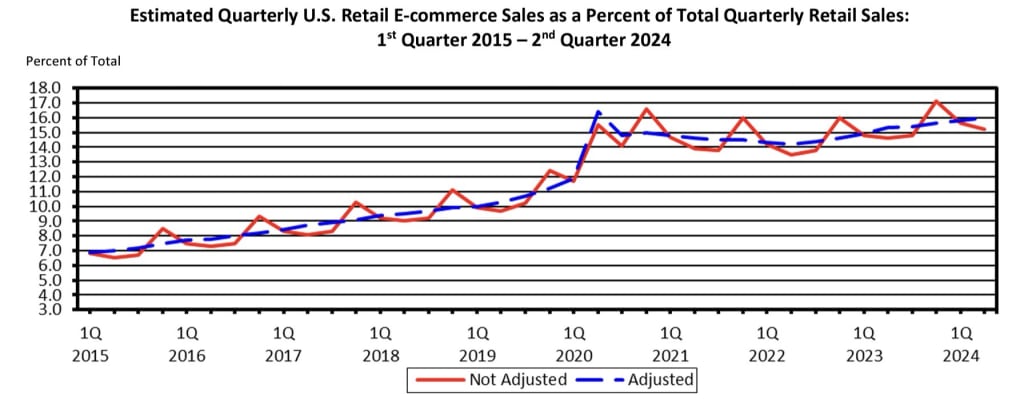
Having a well-made website or digital channel isn’t all that matters. Every brand offers a website to shop at, leading to incredible competition. And then 59% of consumers prefer to start their search on Google, according to our survey. Unless your content ranks number one, it’s hard to stand out in the sea of digital entities offering similar products.
So what’s the solution? The thing is, omnichannel marketing can’t be done haphazardly. There are three recurring challenges we’ve seen time and time again in conversations with our customers.
What is an Omnichannel Strategy?
The prefix “omni” means “all.” When a brand chooses an omnichannel marketing strategy, they seek to connect buying experiences across multiple channels.
Another meaning of the prefix is “universal.” It’s relevant because brands that do omnichannel marketing effectively provide their customers with a universal shopping experience. One that’s consistent no matter where they shop or interact – the simple secret behind omnichannel success.
How Does Omnichannel Marketing Work?
Throughout the pandemic, shoppers often opted to browse for in-stock products online. Then choose to pick up that purchase from the physical store. Curbside pickup (also referred to as BOPIS) and “contactless delivery” were added to the shopper journey. Blending these digital and in-person experiences into a single, seamless customer journey are examples of omnichannel marketing.
An omnichannel approach to marketing helps your brand win customer loyalty because it provides the seamless customer experience they crave. What started as a necessity is now just a really convenient way to shop and live. Many patrons can’t imagine going back to the days of browsing stores in person before making each purchase. Customer behavior has changed for good.
Given this, it’s clear why omnichannel commerce is the future of retail. Even as in-person shopping normalizes, the importance of omnichannel retailing remains. Especially as consumers report the desire to keep some of the shopping options that were first presented to them during the pandemic.
What is Multichannel Retail?
Multichannel marketing and retail is just how it sounds: using multiple channels to drive customer engagement and sales. Think physical retail location and website, for example. These are two different channels where your brand markets and sells products.
Traditionally, the multichannel approach meant a different marketing strategy plus a different customer journey for each. This not only seems like a lot of work, but there’s also a risk of being inconsistent in branding and customer experience.
Today, most modern businesses have multiple marketing channels. What counts as an individual channel? It can be almost any platform or communication method that connects the brand to the customer. This may include customer interactions like live chat, email support, or even phone service. (Yes, customer service support has a huge impact on what customers think of your brand.)
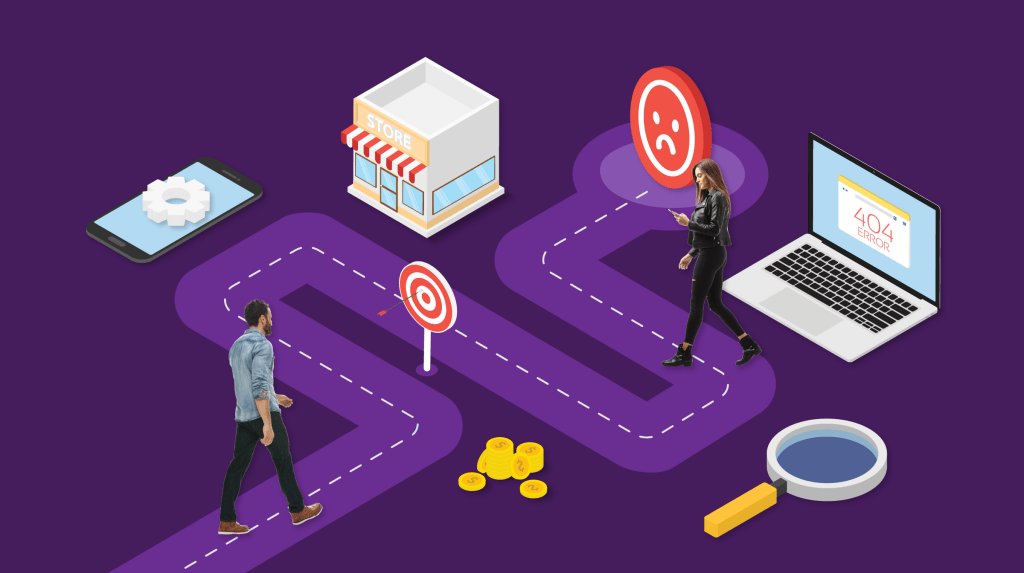
Channels are also the things customers think of as “branding” opportunities, such as Twitter, your official shopping app, or website research customers conduct before making a purchase. Finally, it includes all of the things the potential customer may do online, from using Google search to learn about a product to reading Amazon product reviews.
Remember, multichannel retailing uses any of these. What matters is how brands use these multiple channels, and multichannel marketing is slowly losing ground to a better, more personalized approach.
Omnichannel vs Multichannel: What’s the Difference?
These two strategies stand out in unique ways.
Omnichannel marketing seamlessly carries the customer experience from one channel to another. Thus it requires customer data to deliver the most smooth and personalized journey possible.
What kind of customer data? Unlike personal data, which puts people into demographics with the hope of creating a shopper avatar, behavioral data is more focused on customer interaction. Think of how shoppers click around on a page, interacting with different product landing page elements (behavioral) instead of what state they live in or their age (personal).
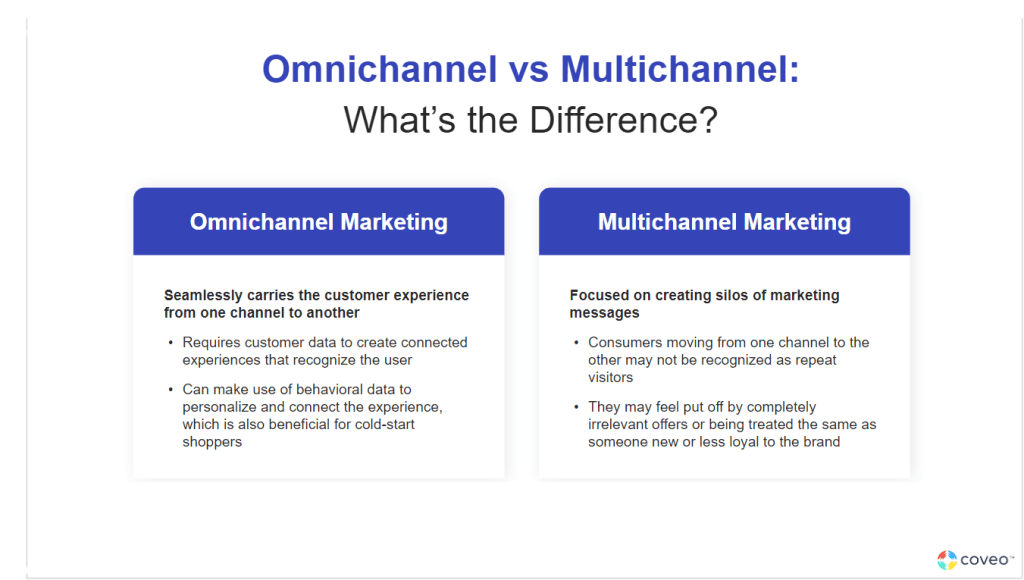
Behavioral data is the perfect tool to help lead a shopper from the research to purchase to return purchase. Their data follows them from channel to channel through a user profile stitched together by machine learning from data collection sources. The result is a 360-degree view of a customer whose needs are easier to meet and market to authentically.
On the other hand, multichannel marketing is focused on creating silos of marketing messages. A Facebook message, email newsletter, and website search are segmented to optimize messages that would work best on each platform, usually based on personal data, not behavioral data.
Consumers moving from one channel to the other may not be recognized as repeat visitors, resulting in a customer hearing offers and opportunities that aren’t relevant to their specific place in the cycle. Worse yet, they may feel put off by completely irrelevant offers or being treated the same as someone new or less loyal to the brand.
How do You Know if Your Ecommerce is Multichannel or Omnichannel?
The omnichannel approach of today offers a single, seamless experience across the shopping journey. And your data can better help you create that experience for your shopper.
But before we get into the marketing challenges you might be experiencing, you should know – for sure – that your approach is an omnichannel retail strategy. Put yourself in the shoes of your consumers and ask yourself these questions:
- If they were to pop onto a single channel and try to shop, then pop onto another channel and continue their journey, would they have to start over?
- Is there a completely different process to purchase from each? Likewise, does your internal structure reflect that journey?
- Do you have segmented marketing efforts and possibly even teams that each handle a different channel’s efforts?
- Is your Instagram shoppable ads team separate and autonomous from your website team?
If you answered ”yes” to these questions, you’re likely running a multichannel retailing operation.
Importance of Search Technology to an Omnichannel Experience
What’s Needed for a Seamless Omnichannel Experience?
Now that it’s established that omnichannel marketing is the future of retailing, how can brands meet this change head-on? One answer lies in search.
“Perfect that search box first. Make sure that the experience that’s coming through the search box is as tightly tuned as possible,” Scott Compton, Senior Digital Business Strategy Professional at Forrester said in an interview with Coveo, highlighting search as an essential customer touchpoint. Compton has over 20 years of experience with direct-to-consumer marketing. “It’s a great time to reinvent your search experience on your site.”
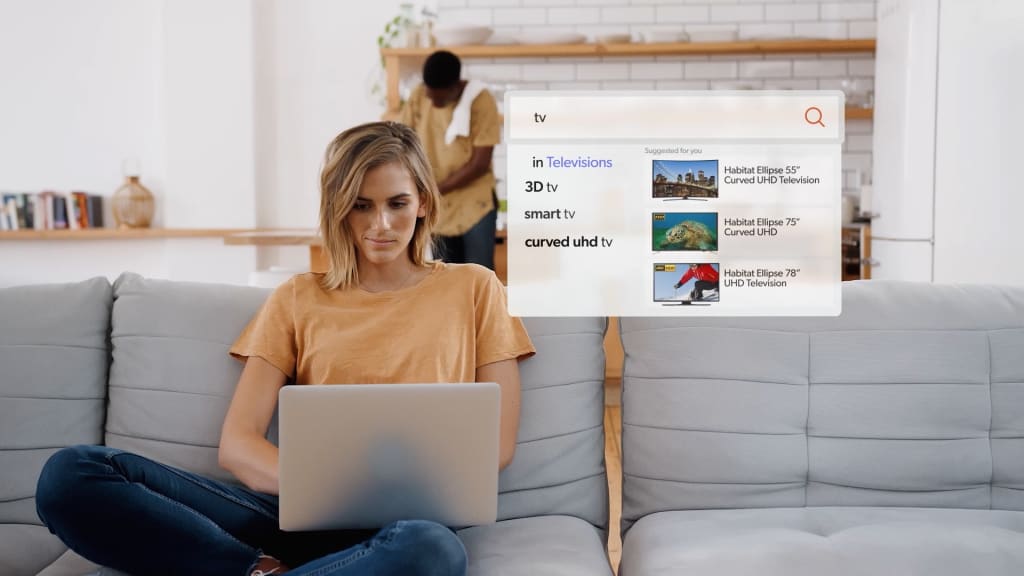
As a former search practitioner, Compton said he was “completely blown away” by newer tools’ ability to deliver relevant results to shoppers when compared with legacy tool sets he’d previously used. Compton especially emphasized the importance of mobile search as a touchpoint.
“Imagine all the different kinds of things that people are using mobile for in your store,” he said. “They’re going to be in that store using that tool, and you’ve got to make that tool as efficient and friction-free as possible.”
How Does Headless Search Underpin Omnichannel Commerce?
While having multiple marketing and sales channels often represent architecture silos with a tightly coupled user experience, the leaders responding rapidly to the evolving demands of this new ecommerce experience are embracing a “headless” architecture using an API-first approach.
Headless commerce offers a truly new, immensely customizable capability to continuously modernize applications in direct response to customer demand, enabling an effective omnichannel retail strategy.
“Headless” has become a buzzword in ecommerce. In the words of Forrester analyst Joe Cicman, headless “is an architectural model based on touchpoints loosely coupled to capabilities through APIs. It allows you to deliver consistent customer experiences across touchpoints, even between mobile, kiosk, TV, and laptop.”
And, importantly, a headless approach helps support the broad array of newer touchpoints: the same presentation code that runs a website or native app is not always valid, but the same underlying ecommerce capabilities are required.
To support the many “heads” of an omnichannel ecommerce, presentation is decoupled from the application logic via APIs. Embracing a headless, API-first approach is therefore critical to successfully navigating the evolving ecommerce landscape.
Three Tips to Improve Your Omnichannel Retail Strategy
Whether it’s a lackluster conversion rate or that you’re attracting the wrong type of customer for your offering, your omnichannel strategy may be connected to three common and repairable errors.
Tip #1: A Brand is a Brand – Regardless of the Marketing Channel
Brands go all-in with what they consider “user experience.” This includes the color palette they choose for their website buttons to the clever quips they share on social media. All of these details matter, for sure. But they don’t necessarily add to what the customer perceives as their unique personalized experience. (At least not in a way that they’re aware of, anyway.)
Picture this: you’re working hard to make your Instagram feed fabulous. Then you create amazing product landing pages on your store website. But if a shopper clicks through from an Instagram post showing a specific product only to land on a category page or even your homepage, they’ll be confused because the end result is not what they expected. In this scenario, you lose a big opportunity to pull omnichannel customers seamlessly from one channel to the other.
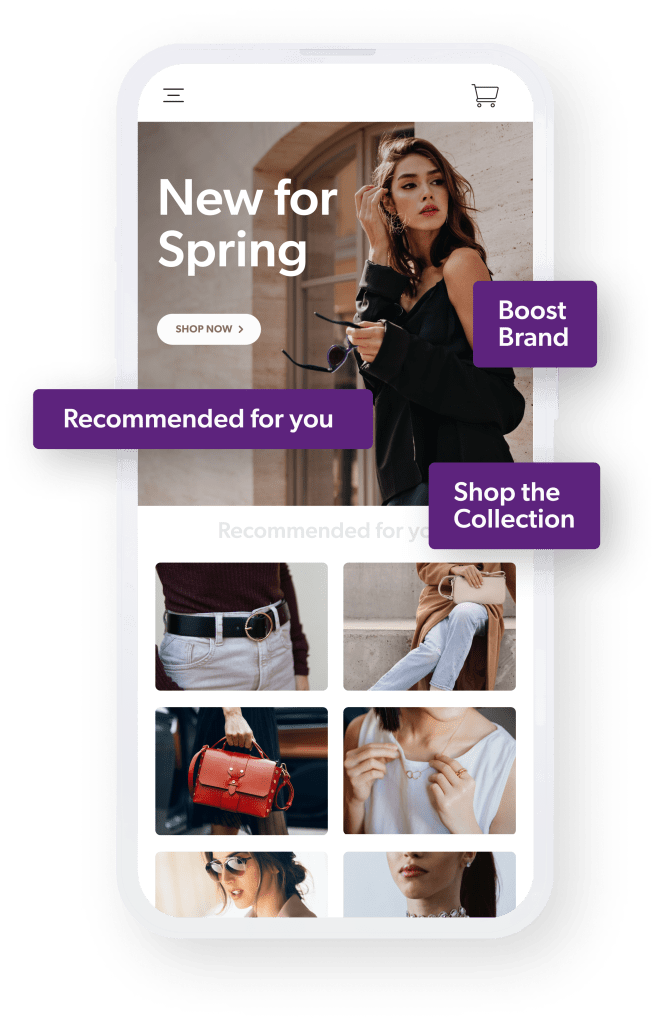
A similar situation is customers searching for a product on a website that they want to purchase in-store. If an item was identified as being available at a nearby location, but the customer discovers that they were misinformed upon arrival, that could lead to a lot of confusion. They could see this shopping journey as impersonal, disjointed, and possibly even frustrating. Brace yourself to bid customer loyalty adieu.
In truth, customers don’t see channels, whether it be an Instagram ad or a shopping site. They only see the brand and expect a consistent look and feel at every interaction point. If you aren’t prioritizing an omnichannel customer experience, you may be missing out.
The Fix
Build your website to attract your ideal customer and keep them coming back. Make it easy for shoppers to get a consistent and seamless customer experience each time they visit, whether it be to research product reviews, add items to their wish list, or complete their purchase right at their desktop.
Two areas where AI-driven solutions can come into play include:
- Ranking, which helps customers find the products they want to see right away, through dynamic content ordering, dynamic content boosting, and automatic facet selection.
- Recommendations, which help buyers see the things related to what they’ve already purchased based on user context.
Create a strong presence across all of your touchpoints that leaves no doubt that that experience is part of your brand. And anything associated with your brand will deliver on this same, excellent shopping experience.
Tip #2: Personalize for Anonymous Shoppers – Without Cookies
Previously, we said 59% of shoppers start their customer journey on Google. There’s a reason for that – both tech giants have changed how we interact with businesses. In the same vein, Netflix, Spotify, Alibaba, and others have respectively disrupted their own industries and changed our expectations around what an online experience should feel like.
The issue? Traditional personalization has relied on third-party cookies – pieces of data about a particular user saved to the browser. Customer data privacy is becoming a more mainstream concern for shoppers, although it hasn’t (as of yet) shifted their buying habits to any significant degree. In fact, a recent Deloitte study shares that while a small segment of the consumer market will avoid a product or service due to privacy concerns, the majority (75%) continue to accept the default cookie settings on websites they frequent at least half the time.
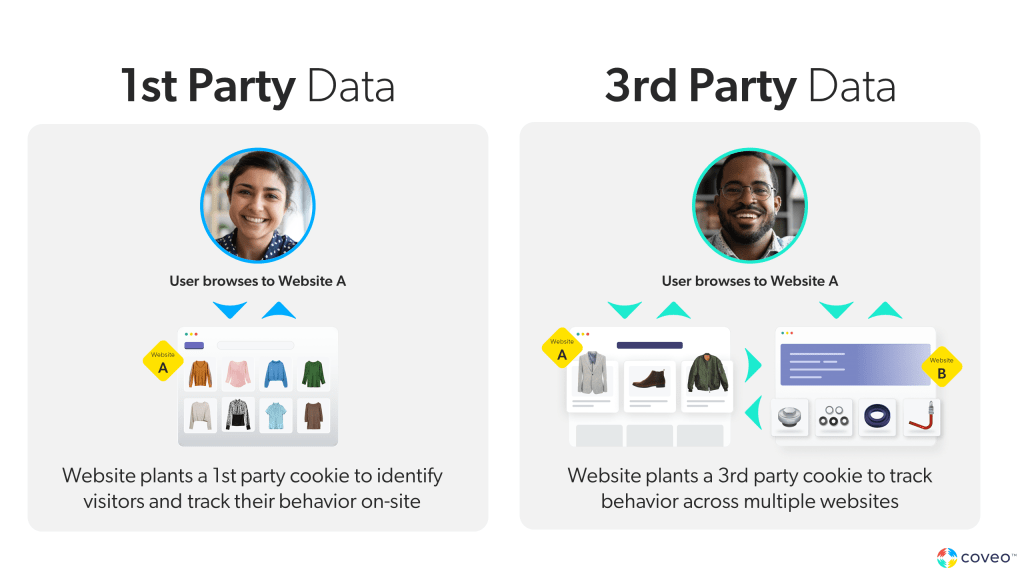
A successful omnichannel strategy relies on personalizing for anonymous shoppers – in the absence of cookies.
What do the rest do? One quarter always refuses permission, and others may use blocking services that do the heavy lifting for them. This means shoppers may not fully realize what cookies do or how they affect their shopping experience. They may not seek to take proactive measures to deal with cookies anytime soon.
Does this mean you should continue using third-party cookies? Not necessarily.
In fact, while previous personalization strategies relied heavily on these tracking methods to show shoppers relevant ads and keep outreach efforts at least seemingly ”custom”, the day will come when more shoppers demand better privacy protections.
The Fix
Skip the third-party cookies in favor of data your customer is happy to provide. From past purchase details to abandoned cart data, there’s enough information willingly given to retailers to make the consumer experience a rewarding one.
Behavioral data also saves the shopper time, helps them find purchases that fit their lifestyle, and reduces frustration associated with buyer’s remorse. You can use data to nurture relationships first, which can ultimately lead to bigger sales.
Remember what we know about customers and channels: they really don’t see them anymore. If a customer learns about a promotional offer online, they may have no recollection if they learned about it on Twitter, Instagram, or through a pop-up on your shopping site.
This makes it essential to have a consistent brand voice and customer experience across every sales channel. Even pulling in data from one channel to the next to offer personalized support to the same customer as they navigate various points in the sales cycle.
Tip #3: Put Yourself in Your Customers’ Shoes
While you might think you know your customer experience journey well, remember there are always outliers and dramatic shifts in shopping trends. Having a consistent experience ensures you capture these sales and are proactive to market changes rather than being reactive. Here’s an example:
A shopper wants to find a boy’s suit for her child for an upcoming last-minute wedding. The online store can be seen in both desktop and mobile apps. When the shopper looks at the desktop site at home, she finds several suits in her child’s size that could possibly work. She’s unsure of the fit, however, and would like to get a better look at the color to ensure it matches the accessories her son already has. The online website offers a store finder, plus facets representing fulfillment options. She chooses to filter for child’s suits available for purchase onsite at a store nearest to her home.
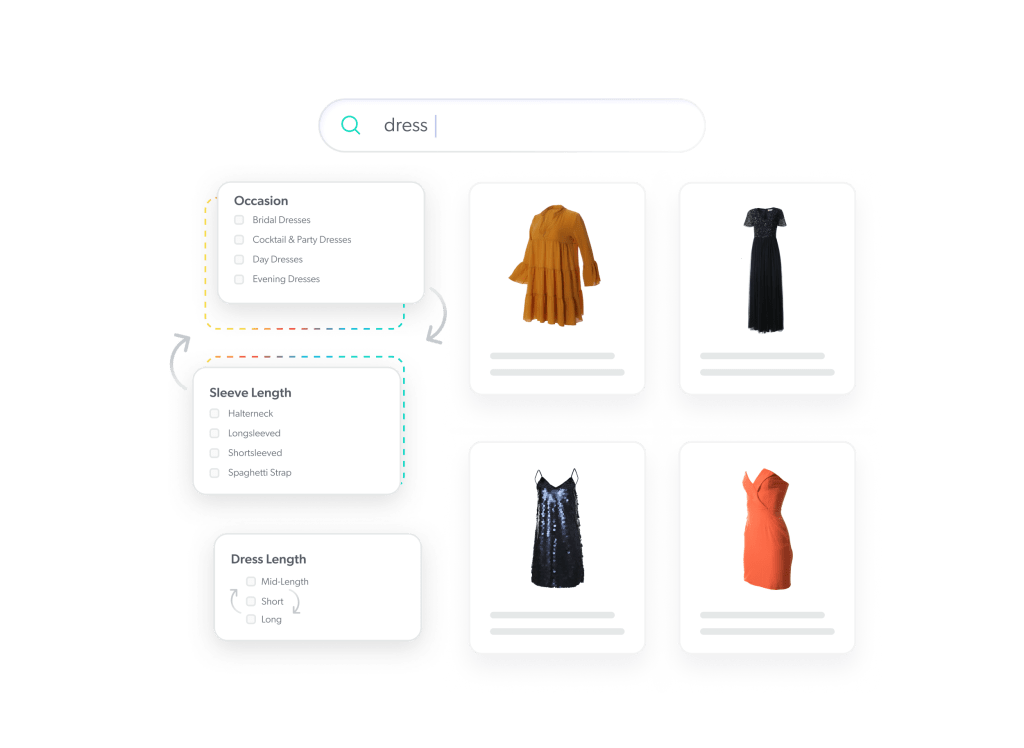
A Lapse in Communication
Encouraged that the retailer closest to her has the items she wants in stock but determined to purchase in person, she packs her child into the car to drive to the store. Before she even leaves her driveway, she pulls the store’s mobile app up on her phone to have it ready with product names to ask for. This time she checks from her phone’s mobile app, and sees that there’s a far more limited selection of products than what she saw from her desktop. This merchant might lack real-time inventory updates between channels where their products are advertised. They also might lack a mobile-friendly experience that offers the same facet options as the desktop website, which means inventory is shown differently on the shopper’s phone.
And because of this, she’s confused. She might ask herself, did the stock change in the time it took her to buckle her child’s car seat? Are the mobile and desktop apps somehow not registering inventory correctly? She places a call to the local retail store and gets a national call center rep who gives her the same information she received from the mobile app. She checks Twitter, hoping to find an account for the brand, but sees accounts set up for each and every retail location in the U.S. and is unsure which accounts are staffed or monitored.
Frustrated, she looks past Google Ads and heads straight to Google Business listings to find the number for the physical store near her. The sales clerk assures her that they do, in fact, have her choice of suits in stock, and they’d be happy to set them aside for her to see in person.
Did you see what happened here? While the use of online inventory tools is useful and even expected by today’s modern shopper, the experience of researching and seeing the items in person was hindered by a lack of accurate inventory updates. The option to reach out via social media was hindered by confusion over which account is appropriate to interact with. Getting accurate information required her to bypass branded efforts and reach out to her store directly. The solutions didn’t match up to actual customer behavior.
What could be done? Depending on the brand’s goals for customer service and sales, they could have tightened up the shopper’s journey through behavioral data that followed the user to see what suits she had purchased in the past, where her closest store was located, and even shared a concierge-type customer service channel that she could use to chat from her phone’s mobile app.
With so many possibilities, there’s no reason for a customer to feel lost in the sea of channels. While this customer knew there were at least six ways to reach out to the company, she didn’t know which one would get her issue resolved the fastest. True omnichannel strategy delivers this quick resolution no matter which channel she pursues, meeting customer expectations (and often exceeding them) in the process. This is what makes a repeat customer.
The Fix
Thirty-six percent of customers who feel they are communicating with different departments rather than a single company would let this affect what they thought of a brand. One path to consistency across all touchpoints that would help the customer get a more consistent experience is unified search.
The customer’s search history (both on the desktop site, the mobile app, and even through Google Business) could have minimized her frustration if it was relevantly linked. Her willingness to use technology should have made it easier to serve her, not lead her down several dead-ends at channels that didn’t tie into a more holistic shopping experience.
Ultimately, customer service from the retailer site or app could have used search history to clue them into the efforts this shopper had already taken, getting them up-to-speed faster and equipping them with the information needed to resolve the shopper’s issue in time for the big wedding.
What is the Future of Omnichannel Retail?
Consumers are far more digitally savvy now. That’s given them new expectations about convenience and personalization when they shop. The online shopping habits we developed over the past year aren’t going away. Instead, we have an accelerated blend of digital and in-person experiences into one seamless experience.
Smarter search will continue to change how we shop both online and in-person. What does the future of omnichannel retail look like? Imagine shoppers walking through your clothing store while describing the outfit they want into their phone, and then your brand’s app sends them to the right aisle.
Or a customer needs one more screw to assemble a new bookcase. So they take a picture of the screw and input the photo into your home improvement app. The app tells them what kind of screw they need and whether it’s available at a nearby location.
These capabilities are exciting, Compton said, but multichannel retailers shouldn’t lose sleep if they’re not ready to implement them right away.
“What I’m hearing across the board, with a couple of vertical exceptions, is perfect the search box first,” he said. “Don’t worry about these new input types. But when you’re shopping for a technology partner, make sure they can handle them in the future.” AI-powered search is another way to level the playing field, even for brands that may be a bit behind on the shift to omnichannel marketing. Creating a relevant ecommerce experience can overcome many obstacles.
Dig Deeper
How do you accomplish unique results for individual customers, at scale, successfully? Check out our Ultimate Guide to Personalization in Ecommerce for insights and how to go to the next level with artificial intelligence.


